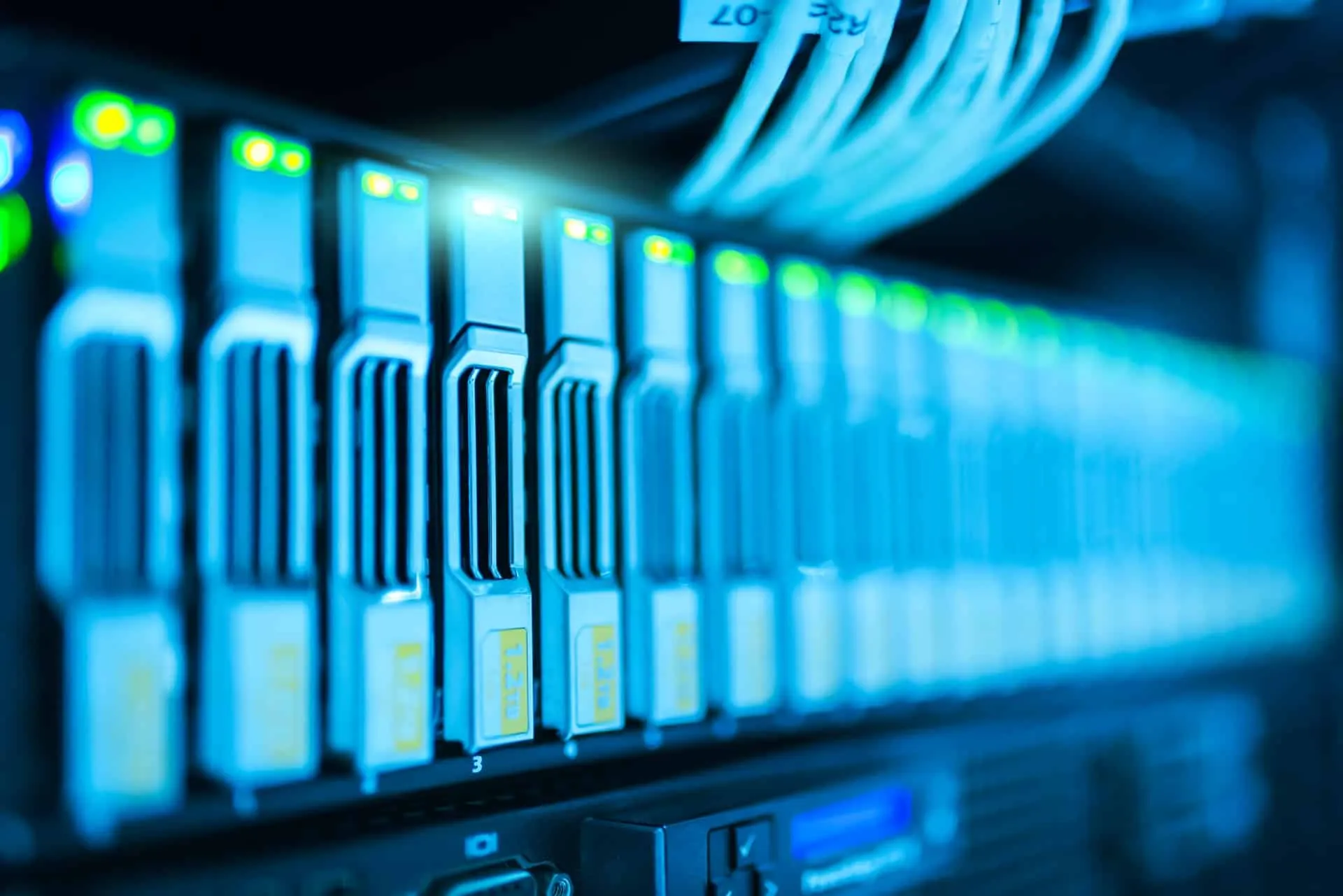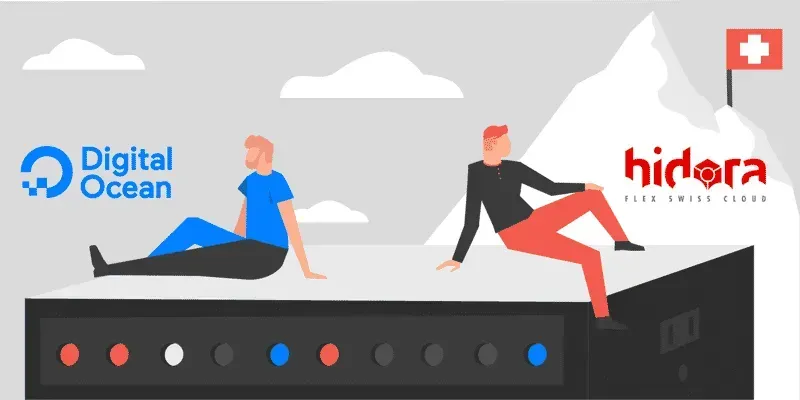
First of all, please note that comparing us to DigitalOcean and other US hosting providers is not correct, as Hidora is a PaaS (not VPS) provider. Also, it has datacenters on Swiss territory and is fully compliant with GDPR and other laws, including the Swiss Data Protection Act. In addition, we provide you with a multilingual support site in English and French, not just in English.
Cost of typical instances
Let us compare the most typical cases.
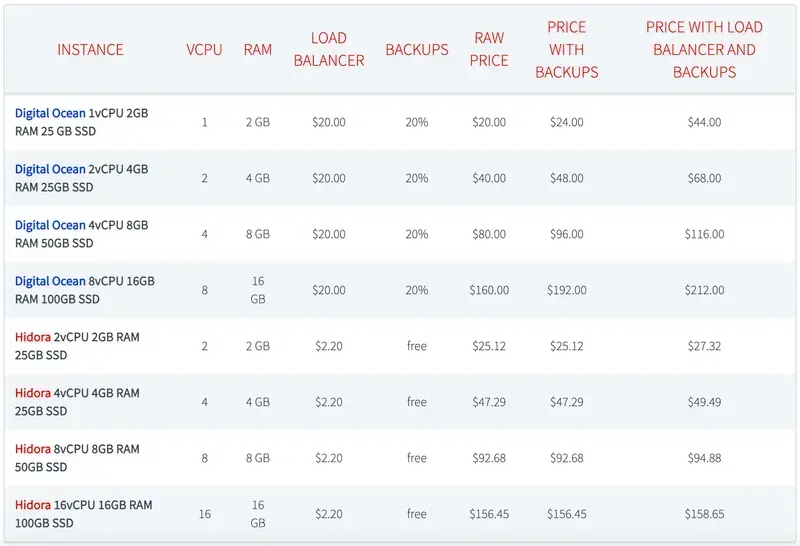
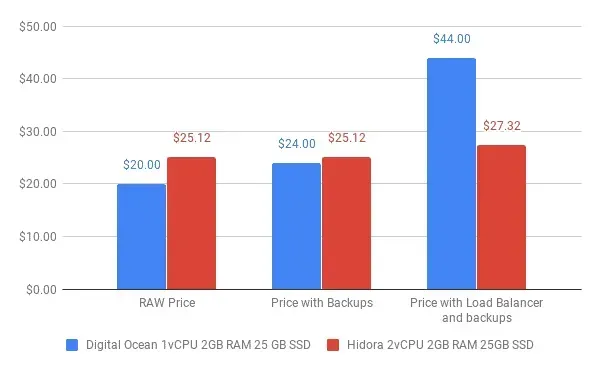
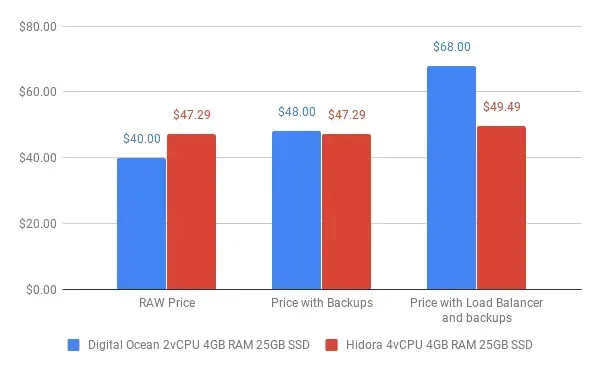
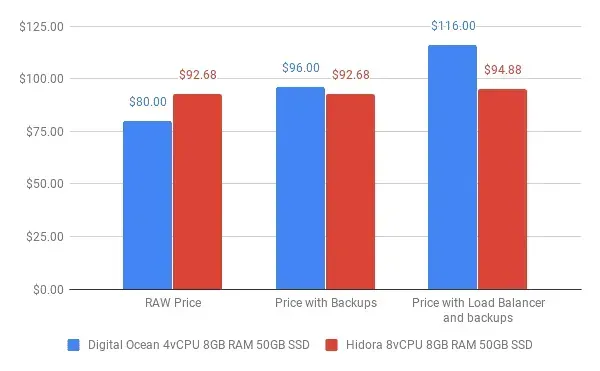
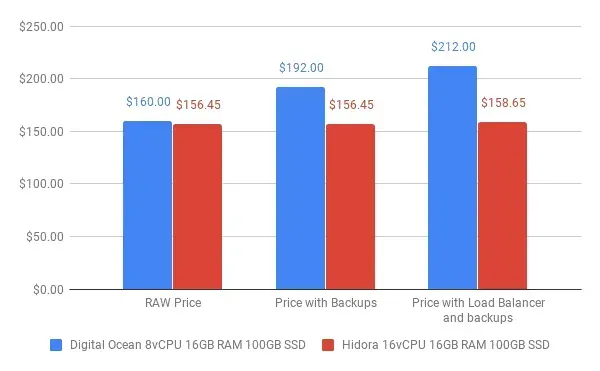
CPUs
First of all, let’s analyse the value for money you get. Even at DigitalOcean, you have the option of choosing different types of droplets (VPS). So what is the main difference between standard droplets and CPU-optimised droplets? The answer is CPU power: CPU-optimised droplets offer you “fair” hyper-threads, whereas standard droplets usually only include part of a real CPU core, called a vCPU.
What is hyperthreading and vCPU and what does it do for you?
Modern processors have a feature called hyper-threading. This means that each physical CPU core has 2 hyperthreads. For an application, each hyperthread is represented as a separate CPU core.
The key point here is that most VPS providers sell the same hyper-thread to multiple customers. In this case, you are buying a vCPU, not a hyper-thread. Usually, VPS providers sell a hyper-thread as 7 - 16 vCPUs.
Unlike many other cloud hosting providers, Hidora only offers you pure hyper-threads, but not small vCPUs. Therefore, comparing Hidora’s prices with DigitalOcean’s Standard Droplets is not correct. Hidora’s CPUs are very similar to the CPUs used in DigitalOcean’s CPU Optimized Droplets because both offer fully dedicated hyper-threads. For this reason, you should compare Hidora’s price to that of the CPU Optimized Droplets, which cost even more than Hidora’s CPUs.
For example, DigitalOcean’s first CPU-optimized Droplet costs $20/month and includes 1 dedicated CPU core, 2 GB of RAM and 25 GB of SSD. The similar configuration on Hidora costs 25.12 CHF but includes 2 dedicated CPU cores instead of one at DO.
Load balancer
If you have a highly available application, you will need a load balancer to stay stable and be able to handle the traffic peaks. In the case of DigitalOcean you have to pay $20 per month for a load balancer, in Hidora you only pay 2.2 Swiss Francs and normally 1 cloudlet will be enough for the monthly consumption.
Backups
Backups in DigitalOcean are not free. If you want a plan with backups included, you have to pay 20% on top of the cost of your virtual machine. At Hidora, we do a backup every 24 hours absolutely free.
Invoicing of stopped instances
You will be charged in full for the Droplets stopped (even RAM and CPU) in Digital Ocean. In Hidora PaaS, you will only be charged for the storage capacity in this case. You will not be charged for RAM and CPU.
Reserved bodies
In DigitalOcean you pay for reserved resources whereas in Hidora you only pay for what you use.
There is no automatic scaling in DigitalOcean (in Hidora, automatic resizing of instances without downtime - which saves money as you don’t pay for reserved resources compared to DigitalOcean).
Automation
Both DigitalOcean and Hidora offer marketplaces with a wide variety of one-click installation applications, which can save your developers a lot of time when deploying applications.
Kubernetes
Both cloud providers offer Kubernetes as a Service. The difference is the billing model. DigitalOcean charges you based on the number and size of worker nodes, while master nodes are not charged. The billing increment is based on the droplet size (1 vCPU + 2 GB minimum). Hidora charges you for both master and worker nodes, but the billing is more granular, i.e., you are charged for 128 MB of RAM and 400 Mhz parts (1 cloudlet).
Databases
Both DigitalOcean and Hidora offer databases as a service. DigitalOcean currently only supports PostgreSQL, support for MySQL and Redis is forthcoming. Hidora supports various types of databases, including MySQL, PostgreSQL, MariaDB, Percona, MongoDB, Redis, Cassandra, CouchDB and Neo4j.
We hope that this article will provide you with all the arguments you need to make the right choice and find the best hosting solution for your business.
